Shrimply Explained is currently undergoing renovations. Please don't buy anything yet. Thank you!
Rocks can be incredible accents or centerpieces in a shrimp tank. They can also provide lots of extra surface area for beneficia bacteria and biofilm to grow, stabilizing your tank and feeding your shrimp, respectively. There are risks to adding rocks to a shrimp tank though, because some types change water parameters – potentially to unhealthy levels. This happens because many rocks are made of calcium/magnesium carbonate that dissolves into the water, causing pH, GH, and KH to increase, which can affect molting and overall health.
To make things shrimple for you, we’ve compiled a list of shrimp-safe rocks that look great and don’t affect your parameters! Not every rock is labelled correctly though, so if you’re ever unsure, we also provide two ways to test whether a rock will cause problems in your tank!
Please note this is a list of common rocks/minerals used in aquascaping but is not a comprehensive list. Additional research is always recommended.
Other Shrimp Content
We have a lot of content coming soon. Please follow us on social media and subscribe to our newsletter for updates and useful shrimp care tips!
Lava rocks are great for shrimp tanks because their porous structure adds a ton of extra room for biofilm.

Photo Credit: The Science of Tanks (YT Channel)
Dragon stone has many jagged, circular holes that that make it an intriguing centerpiece element for aquascapes. Also increases surface area in your tank.
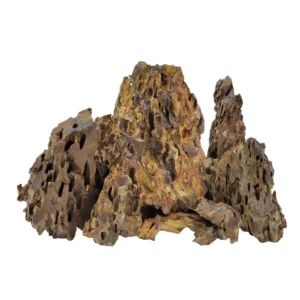
Photo Credit: https://fresh.bulkreefsupply.com/dragon-stone-25-gallon-kit-lifegard-aquatics.html
Wonder stone can have fascinating swirling patterns and shapes.

Photo Credit: https://www.freshmarine.com/ce-pet-600740001307.html
Slate is deposited in flat layers when it forms, which break off as thin plates to create an interesting texture in your shrimp tank.
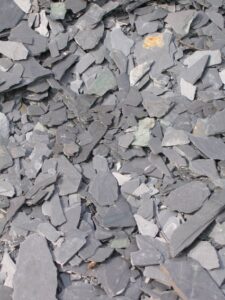
Photo Credit: Vincent Anciaux, CC BY-SA 3.0 <http://creativecommons.org/licenses/by-sa/3.0/>, via Wikimedia Commons
Almost all sand bought from stores is inert enough that it does not change parameters in shrimp tanks. This may not always be true for sand harvested from nature.
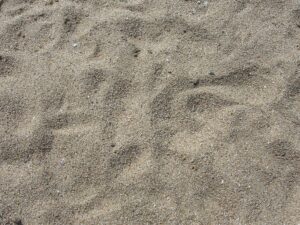
Photo Credit: Thamizhpparithi Maari, CC BY-SA 3.0 <https://creativecommons.org/licenses/by-sa/3.0>, via Wikimedia Commons
Granite offers a unique speckled coloration and rough texture to increase surface area in your tank.
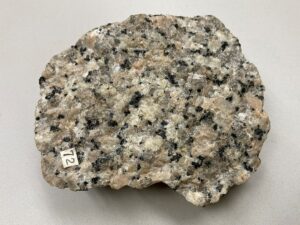
Photo Credit: The Science of Tanks (YT Channel)
The composition of river rocks depends on the minerals in the local area so some are inert and safe for shrimp tanks while others change pH, GH, and KH.
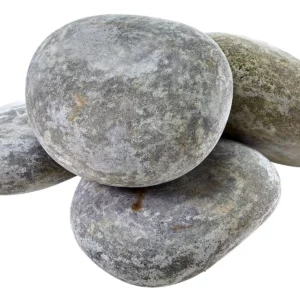
Photo Credit: https://fresh.bulkreefsupply.com/black-river-rock-caribsea.html
Quartz is a mineral made of silicon dioxide. It does not affect water parameters so is safe for shrimp tanks.
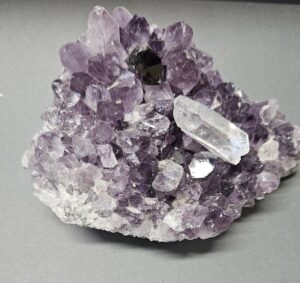
Photo Credit: The Science of Tanks (YT Channel)
Tuff is a type of rock formed from volcanic ash ejected during explosive volcanic eruptions, compacted and cemented into a solid mass. Inert and safe for shrimp tanks.
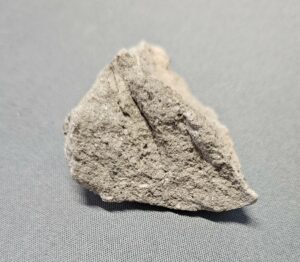
Photo Credit: The Science of Tanks (YT Channel)
Rhyolite is a fine-grained igneous rock rich in silica, often light in color, formed from the rapid cooling of high-viscosity magma. Inert and safe for shrimp tanks.
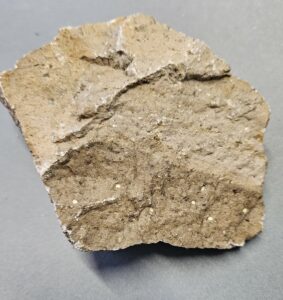
Photo Credit: The Science of Tanks (YT Channel)
To figure out whether a rock is safe to add to your shrimp tank, you can do one of two tests.
Please note this test is not perfect when done with white vinegar. Some rocks do not react quickly with white vinegar but still affect parameters. The stronger the acid used (like hydrochloric), the more effective and dramatic the fizzing will be and the more effective the test.
A slower but useful way of testing rocks is to place them into a container of water and wait a few days or weeks. Test the GH, KH, and optionally TDS before placing the rock in the water, then test again several days or weeks later and see if any of the parameters increase. If they do not, then the rock dissolves slowly enough that it will not affect your shrimp tank and is safe to use.
Rocks that are generally soluble are softer than rocks that are not. For instance, most metals, salts and carbonates are 4.5 and below on the hardness scale. If the rock scratches from a metal knife then it is likely soluble and shouldn't be in your shrimp tank.
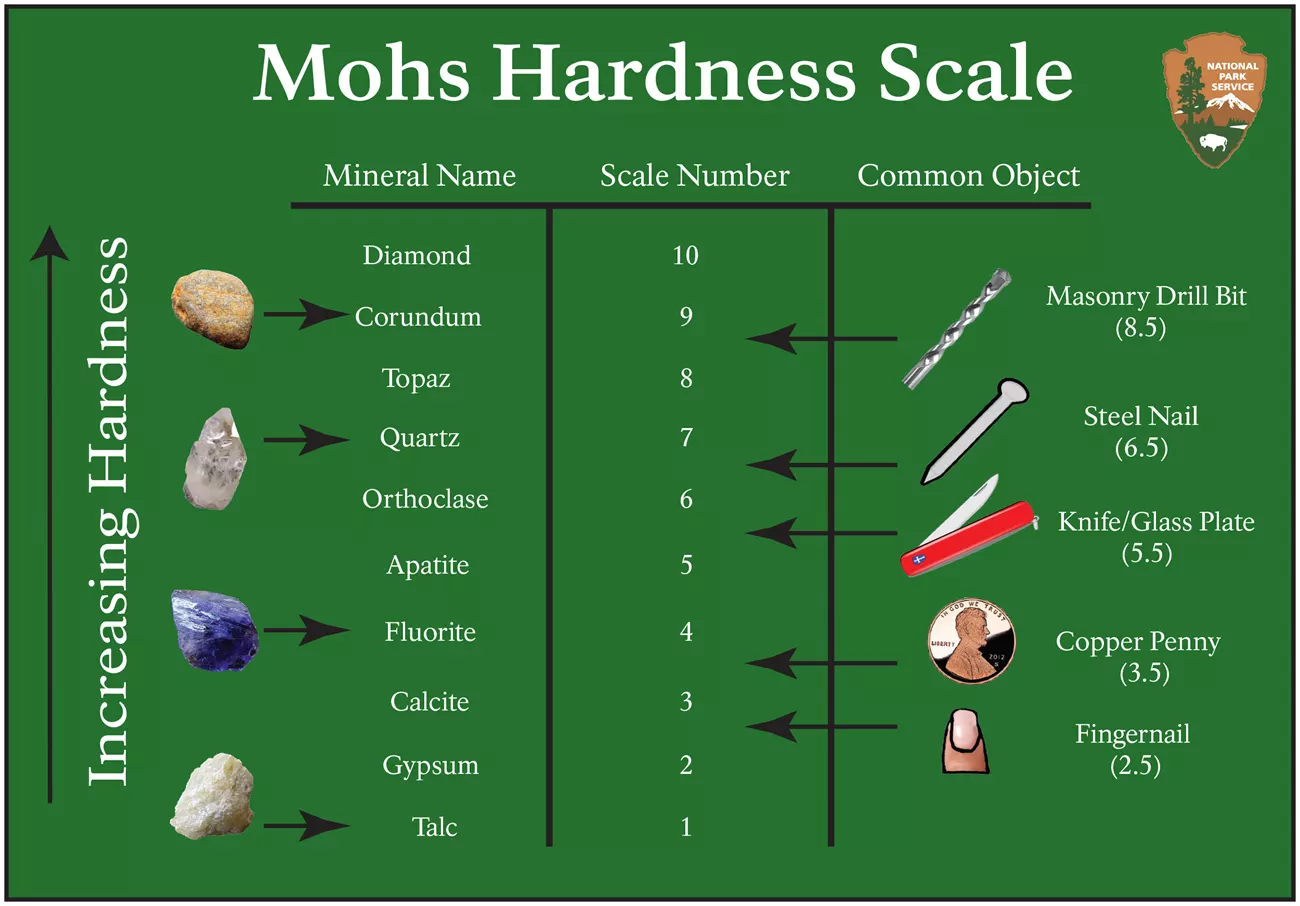
Photo credit: National Park Service
Rocks that leach minerals continually increase GH, KH, and TDS, which may eventually cause molting problems for your shrimp. This leaching also exhausts active substrate faster than normal, leading to additional costs for replacement substrate (if required by the shrimp species). The leaching rate is affected by pH and other water conditions so results in your tank may vary. In addition, some of the rocks on this list have copper and other metals in them that can be poisonous when dissolved.
Seiryu stone is a very popular rock for aquascaping but is unfortunately quite soluble so is not safe for shrimp tanks.
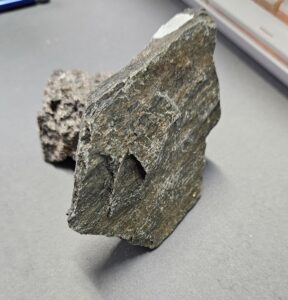
Photo Credit: The Science of Tanks (YT Channel)
Elephant skin stone is quite soluble so is not safe for shrimp tanks.
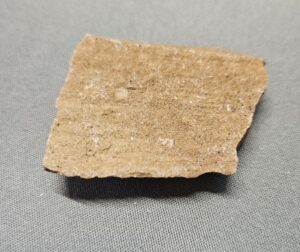
Photo Credit: The Science of Tanks (YT Channel)
Limestone is a calcium-carbonate rock that is extremely soluble so is not safe for shrimp tanks.
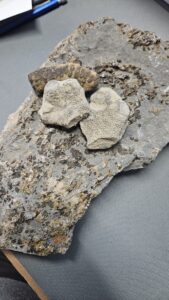
Photo Credit: The Science of Tanks (YT Channel)
Alabaster is a variety of gypsum (calcium sulfate) that dissolves easily in water, drastically affecting GH and the calcium:magnesium ratio in your water. This leads to molting problems for shrimp so Alabaster is not safe for shrimp tanks.
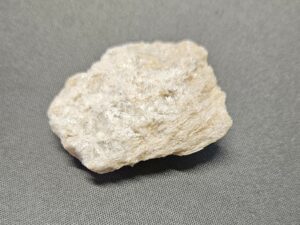
Photo Credit: The Science of Tanks (YT Channel)
Marble is a variation of limestone (calcium carbonate) that is soluble and will change pH, GH, and KH. It is not safe for shrimp tanks.
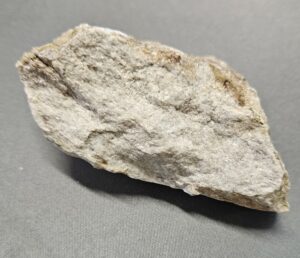
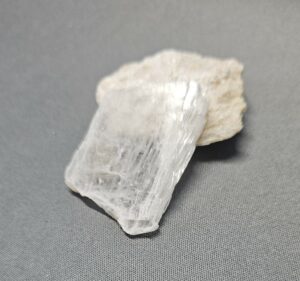
Photo Credit: The Science of Tanks (YT Channel)
Malachite and azurite are rocks containing large amounts of copper carbonate, creating beautiful green/blue hues that would look incredible in any aquascape. The only problem is the copper that leaches from them will kill any invertebrates almost immediately... definitely not shrimp-safe.
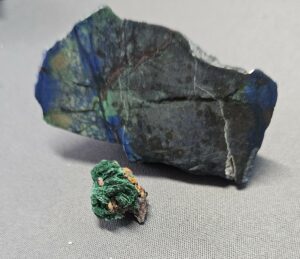
Photo Credit: The Science of Tanks (YT Channel)
Fluorite is composed of calcium fluoride, giving gorgeous but deadly colors that leach into water and kill shrimp.
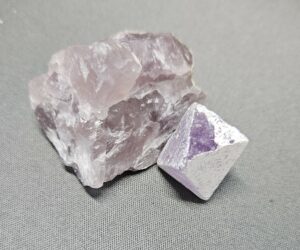
Photo Credit: The Science of Tanks (YT Channel)
As you can see, there are a lot of rocks out there, and it can be tough to figure out which ones really are shrimp-safe. Whenever you're in doubt, do one or more of the tests we recommend to find out before putting it in your tank. It's always better to be safe than sorry after watching some of your shrimp experience molting problems.
If you'd like to learn more about shrimp and aquascaping, Shrimply Explained has a guest article on Aquascape Guide (ASG)! ASG is a great resource to learn more about aquascaping, how to keep plants healthy, and they have a handy algae identification tool that has helped us with our shrimp tanks.
That's all for this article. Check out our other blog posts for more interesting shrimp information, the Shrimp School for a great overview of key shrimp keeping topics, or the Shrimply Explained YouTube channel for entertaining and educational videos.
Happy shrimpin'
Pssst... Want to learn everything you need to know to have happy and healthy freshwater shrimp? We've got you covered with clear, concise, and fun information in every lesson of The Shrimp School!
You know it's true because we have a badge.